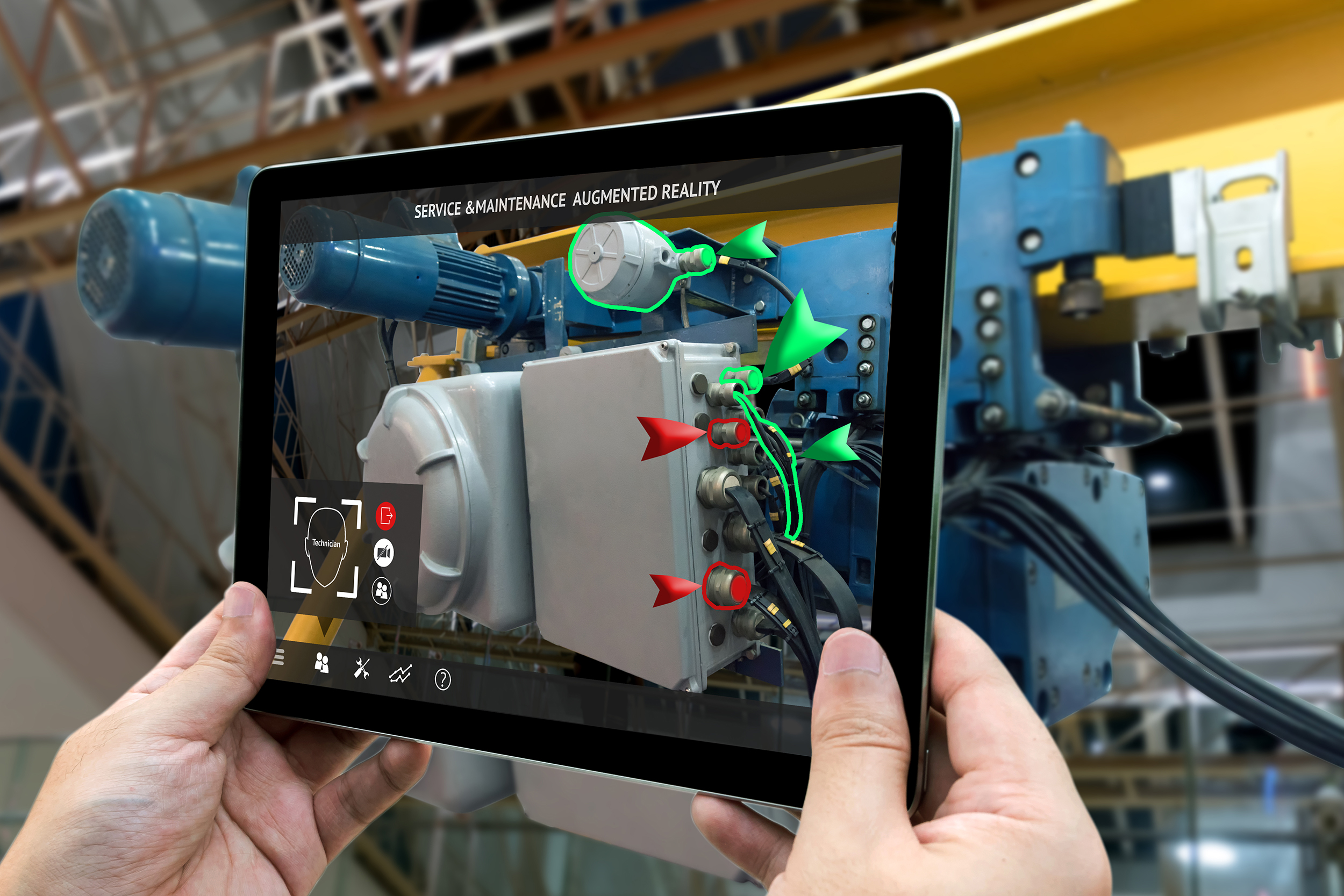As factory automation begins to incorporate augmented reality into its processes, what should industrial manufacturers expect?
Of all the new Industry 4.0 technologies, Augmented Reality is the one that, to many people, seems the most surprising. AR devices are often worn like glasses upon which software can project images or instructions as an overly to reality. This technology is more or less sophisticated depending on the application. In some cases, it’s as simple as a way to project instructions to the user. In others, it combines GPS data with vision technology to add visual graphics to a user’s field of view that can accurately identify and track moving objects.
Despite the growing accessibility of this technology and the clear advantages, it offers when applied effectively, too many it still seems like a futuristic idea that’s more of a gimmick than a practical manufacturing tool. However, when used intelligently in an automated workflow, augmented reality can significantly improve manufacturing processes. Here’s how.
1. Providing workers with virtual assembly instructions.
Many operators perform complex, semi-automated assemblies at work stations where they perform steps where use of robotics is unfeasible. These assembly steps are prone to human error and require a high degree of attention from the operator. Augmented reality can reduce the burden placed on operators by providing a visual feed to guide them through assembly steps.
2. Assisting quality assurance through error prevention and identification.
While using AR to help operators perform tasks is outstanding, even more, exciting is the ramifications this will have on quality control. With AR-enabled devices there to guide operators, they are less likely to miss a step or perform an incorrect action. AR technology can even go a step farther by alerting a user to any mistakes before they are propagated or advance further down the assembly process.
3. Aiding operators while they work with robots.
With the increasing roboticization of manufacturing, operators are more and more frequently finding themselves working alongside robots as they perform their duties. AR can help operators work more smoothly, by showing operators how the robots will be moving, and where a human operator might step in to do their part of the work.
4. Accessing data quickly from the factory floor.
Managers can walk along the factory floor, and as they pass each station, their AR-enabled glasses show them production data about various components and the robots/machine work cell handling their assembly. The manager can quickly verify that production is meeting quality and output goals, check that the production equipment is operating smoothly, and quickly pull up any extra data they need without having to return to their workstation.
5. Training operators with virtual assistance.
Manufacturers across industries are well aware of the gap in skilled labor among their workforce. One of the biggest challenges these companies face is the need to bring new hires up to speed quickly. AR offers an opportunity to narrow that gap by improving on-site training.
Operators could be on the floor, accessing data about the machine they’re working on, assembly instructions from a manual, or even live guidance from their trainer or from support personnel as they do their job. AR would make it easier for these workers to ask questions and receive answers without having to leave the manufacturing floor.
6. Guiding warehouse workers to components.
While many warehouses now use robots to retrieve stock, human operators also often need to access the stacks to retrieve items, look for the lost products, or conduct inventory. AR technology can make it easier for workers to find the parts they’re looking for, by directing them to the appropriate shelf in the warehouse.
Augmented reality won’t disrupt the industry, but it will enhance it.
While talking about “disruptive technology” continues to be a buzzword, this concept doesn’t do the technology justice. AR isn’t going to transform manufacturing, but it does provide a new means for manufacturers to improve their processes. Those who learn to integrate it into their systems will reap the benefits of greater efficiency, quality, data transparency, and safety. Those who do not work with the technology will gradually find themselves falling behind as their competitors edge them out in a tight market.
That said, AR doesn’t have a place in every system and assembly, and the benefits it brings are not the same for each company. For some manufacturers, AR will be integral. For others, it will be a “nice to have,” but hardly a necessity. If you want to know more about how AR can be incorporated into your automated workflows, contact Eagle. We can discuss your current automation setup, and advise you as to where AR might provide your business with additional benefits. Contact us today – Solutions@EagleTechnologies.com
![]() Connect With Eagle Technologies LinkedIn
Connect With Eagle Technologies LinkedIn
Eagle Technologies, headquarters in Bridgman, MI
Eagle builds the machines that automate manufacturing. From high-tech robotics to advanced product testing capabilities, Eagle offers end-to-end manufacturing solutions for every industry.


